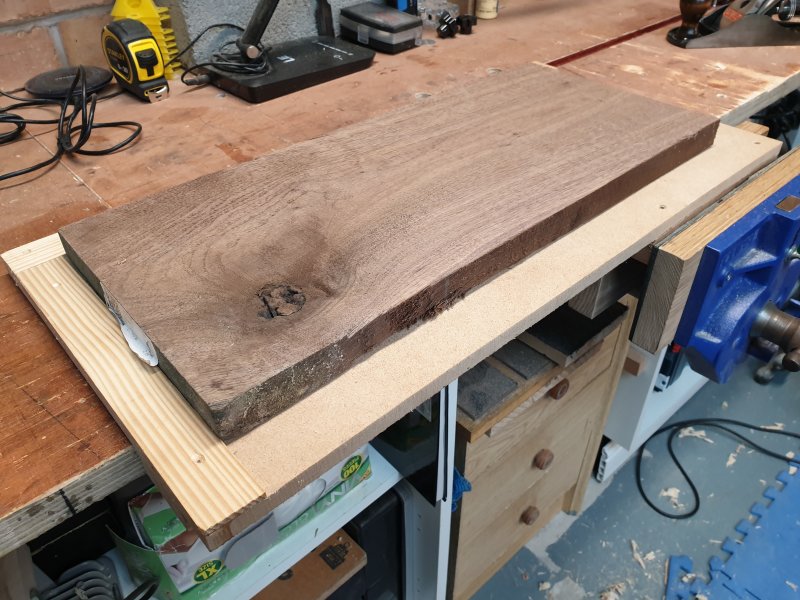Forgive me if this was asked before, I have no idea how to word it in the search tab. Dog hole alternatives? :?
I just finished my workbench, flattened the top, about to start a new project. Want to plane a board that's too wide and too thin to place it in a vice. Was wondering what is the common thing to do here?
I don't want to drill dog holes in my bench, I also don't have a tail vice.
Before I had a dedicated bench I did all my woodworking on a plank of wood on a pair of trestles , I would just put a woodscrew as needed to hold wood pieces in place while planing. Any better alternatives?
I just finished my workbench, flattened the top, about to start a new project. Want to plane a board that's too wide and too thin to place it in a vice. Was wondering what is the common thing to do here?
I don't want to drill dog holes in my bench, I also don't have a tail vice.
Before I had a dedicated bench I did all my woodworking on a plank of wood on a pair of trestles , I would just put a woodscrew as needed to hold wood pieces in place while planing. Any better alternatives?



































